News

18 December 2025
Plants, proteins, and new possibilities for antibiotics and agriculture
Stowers scientist discovers insights into how plants “talk” to bacteria in soil, possibly informing future antimicrobial therapies
Read Article
News
From medical school to mutual funds to world-class science, Jim Stowers led an astonishingly remarkable life.

When he was a boy, Jim Stowers opened a savings account at a local Kansas City bank so he could set aside some of his allowance. A few years later when his mother took him to close the account, the youngster was shocked at a balance that was barely more than what he’d deposited. “I learned that a savings account was a money saver, not a money maker,” Stowers would later write in his first book, Yes, You Can Achieve Financial Independence. This realization would affect him his entire life.
In fact, during his long and productive ninety years, Jim Stowers became a successful entrepreneur who took a patient, long-term approach to launching American Century Investments in 1957 and the creation of the Stowers Institute for Medical Research in 2000 and BioMed Valley Discoveries in 2004. When Jim died peacefully at his Kansas City home on March 17, 2014, he left a lasting legacy.
In his professional life, Jim Stowers was a legendary businessman and philanthropist, whose primary goals were to improve the financial security of his customers and the thousands of employees who worked in the companies he founded. Jim Stowers’ concern for helping others was recognized around the globe when he gave away a significant portion of his wealth for the advancement of science.
Forbes magazine recognized Jim and Virginia Stowers as two of “the most generous people on the planet” because they have given the Institute the vast majority of their wealth, an astonishing total of $2 billion. Jim had come full circle—from a young student who wanted to help people as a physician; to a businessman who wanted to help people as an asset manager; and finally to a philanthropist who wanted to help people by supporting basic biomedical research.
“For Jim, creating new knowledge was the most powerful contribution he could offer mankind,” says Richard W. Brown, board chairman at the Stowers Institute for Medical Research, BioMed Valley Discoveries, and American Century Investments. “Throughout his whole life, whether as businessman or philanthropist, he thought about making things better for other people.”
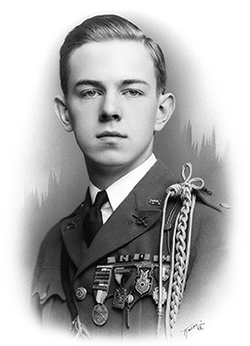
In the Beginning
James Evans Stowers Jr. was born January 10, 1924, in Kansas City, the first child for Dr. James Evans Stowers, a surgeon and medical doctor, and Laura Smith Stowers, whose family included several successful business owners.
When Stowers was fourteen, his father believed the country was headed for war and decided his son should plan to enter the service as an officer. So Stowers enrolled in high school at the Kemper Military School in Boonville, Missouri, an experience that taught him to take orders, treat others fairly, and set a good example. After graduating in 1941 from military school, he began premedical studies at the University of Missouri in 1942, with plans to become a doctor like his father and grandfather before him.
But Dr. Stowers had been right, and the entry of the United States into World War II interrupted his son’s college studies. In 1943, Stowers left school to begin basic training with the Army Air Corps. During the next two years he trained as a fighter pilot and gunnery instructor, attaining the rank of second lieutenant.
After the war, Stowers re-enrolled at the University of Missouri where he earned a bachelor’s degree in chemistry. He continued his studies at the University of Missouri in the medical school with additional instruction at the University of Iowa. He earned a two-year degree in medicine from the University of Missouri and worked at Research Hospital in Kansas City.
It was during this time that Stowers registered for a cellular physiology course taught by the eminent cell biologist Daniel Mazia. “Dr. Mazia was an amazing teacher who was able to make science courses come alive,” Stowers would write in his second book The Best is Yet to Be. “I studied extremely hard and was absolutely determined to convince him that I truly understood his subject.”
In fact, Stowers was so enamored with the course and its professor that he was shocked when he received a B+ on an essay test he thought he’d aced. Next to the grade, Dr. Mazia had written, “I have never seen so much information unorganized.” Stowers says this comment changed his life. “I was truly grateful for that criticism,” he wrote. “I was determined to organize my thinking so that no one would ever have the chance to say that of me again.”
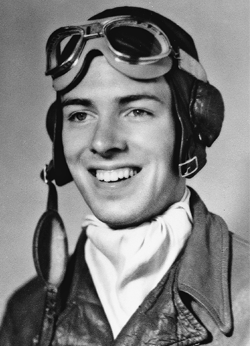
Partners in Life and Business
It was at a Research Hospital holiday party in 1952 that Stowers met a young nurse named Virginia Glascock. The couple fell in love and married in 1954. As Stowers wrote in The Best is Yet to Be, “Our married life began with a five-year-old car, a one-bedroom apartment, $1,000, loads of love and the determination that we were going to become financially independent.” In truth, that had become a more frightening prospect because, by then, Stowers had decided to pursue a business career rather than medicine—in part, he joked, because Virginia refused to marry a doctor.
After briefly working in collection services for Dun & Bradstreet, Stowers signed on to sell mutual funds for the Overland Park, Kansas-based investment firm Waddell & Reed, where he learned “how to shake hands properly, dress for success and communicate an interest in clients’ welfare”—in other words, how to become a successful salesman. His mentor during that era, George H. Wood, was invaluable. “My experience with George was worth more than my two college degrees,” Stowers wrote. “In fact, I like to think that I’ve earned a third degree from the School of Hard Knocks.”
In 1956 Stowers established his own business, Stowers & Company, a small-scale operation in which he sold term life insurance out of his house. By then, he had realized that many people he approached were life insurance poor. Moreover, if they had insurance, they couldn’t afford to buy mutual funds. He had discovered that “there is a tremendous difference between helping people improve their financial positions and selling mutual funds for commissions.” This focus on others was the cornerstone to his success.
But Stowers didn’t want to give up the mutual fund business, so in 1958 he decided that if the company created its own funds rather than just selling those of others, it could be more profitable. Consequently, with only about $100,000 from a handful of shareholders, Stowers launched Twentieth Century Mutual Funds, which would be renamed American Century Investments in 2000.
From the beginning, Stowers’ mutual fund company focused on small investors. In the 1970s Stowers took over management of the company’s funds. He even wrote his own computer program to track promising stocks before his competitors could—no small feat at the time. His success was recognized when Money magazine featured him on the cover of its April 1981 issue as one of “The Best Stock Pickers in America.”
Even as the mutual fund company began to soar, Stowers continued to integrate his experiences, attributing much of his business success to his medical training. “I had no business education and didn’t know any business jargon. Instead, I communicated with people using words they understood,” he said in a 2000 interview. “I tried to do something good for my clients. I wasn’t trying to ram anything down their throats.”
From Entrepreneur to Visionary
In the midst of his business triumphs, Stowers was diagnosed and treated successfully for prostate cancer in 1987. In 1993, his wife Virginia underwent surgery for breast cancer. Because his father had died prematurely—at age 55—from heart disease, Stowers had long taken care of his health by exercising regularly and watching what he ate. In fact, at age 63, worried that he had by then outlived his own father by eight years, he went for a physical that revealed the cancer.
Those personal experiences, from heart disease to cancer, prompted Stowers to start thinking about using his family’s accumulated wealth to build a state-of-the-art biomedical research facility in Kansas City. In 1988, Stowers and his wife founded the health-focused Stowers Foundation, which became increasingly focused on the possibility of recruiting world-class scientists to conduct basic biology research in what Stowers himself once called “an unlikely place.”
The challenge was to attract to Kansas City biomedical researchers who were more at home in places like San Francisco and Boston. “We were told the only way to do groundbreaking science would be to build on one of the coasts,” Stowers said at the time. “I said, ‘Time out. I want it here! My roots go back to the founding fathers of this city. This is my home.’”
As a starting point, in 1994 Stowers set up a $50 million endowment to build momentum to create a research consortium at four campuses across the United States. Stowers nevertheless planned to build an organization based on his rock-solid conviction that day-to-day team interactions were essential for any success. And he continued to insist that scientific research could be successfully conducted in the Midwest.
In addition, he also surrounded himself with a team of experts to explore various scientific approaches used by some of the most prestigious research institutions and biotechnology companies. The group visited other facilities to determine how they might structure the most productive organization possible.
Stowers’ dream of bringing this enterprise to his hometown became feasible when in 1998 J.P. Morgan & Company bought forty-five percent of American Century stock, enabling Stowers and his wife to translate their share of stock holdings into the approximately $300 million required to build the Stowers Institute in Kansas City.
In typical Stowers fashion, the business tycoon reacted to the sale with self-assurance. After it was publicized, a Forbes reporter called to ask him what he did to celebrate the momentous event. “The interviewer asked, ‘Did you go out and buy a BMW?’ and I said, ‘No, we went to dinner.’”
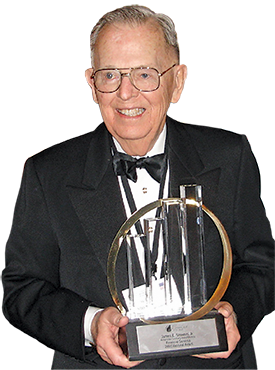
Making the Dream a Reality
Construction of the Stowers Institute began in 1997 on the site of the former Menorah Hospital. The doors of the 600,000-square-foot facility opened in November 2000, completely unrecognizable from the hospital that had stood there previously. Mike Levine, PhD, a developmental biologist at the University of California-Berkeley and current chair of the Institute’s scientific advisory board, characterized the building as stocked with research tools that were cutting-edge.
Since then, the Institute has recruited twenty investigators and employs a staff of nearly 550 to work in what Stowers Institute Investigator Joan Conaway, PhD, calls “a scientific Disneyland.” Both visitors and employees agree that the buildings’ design, labs, furnishings, and landscape make it one of the world’s most beautiful scientific laboratory campuses.
However, in an interview a few years after the Institute’s opening, Stowers put into perspective his no-nonsense attitude regarding the buildings’ aesthetic elements: “People ask me, ‘Aren’t you proud of the building?’ and I say, ‘No—I’m proud of the people in it.’”
In fact, Stowers’ overriding goals—put into practice at American Century Investments and perpetuated at the Stowers Institute and BioMed Valley Discoveries—were simple and consistent: to attract the very best people to do a job, to treat them fairly and to encourage them to share ideas for the mutual benefit of all.
Harvard’s Doug Melton, PhD, a stem cell biologist and former chair of the Stowers Institute’s scientific advisory board, remembers that Stowers told the board to recruit only scientists who would change how people think about science. “If you consider the content of an undergraduate genetics or cell biology textbook,” says Melton, “Jim wanted to recruit people who would eventually do something cited in that kind of book.”
Even after they were hired, Stowers never stopped enforcing very rigorous standards for retaining trailblazing investigators. Once on board, the Institute’s principal investigators don’t earn tenure, but are reviewed periodically—and their performance results are based on their answer to a single, very Jim Stowers-like question: “What have you done in your time at the Institute to change the state of your field?”
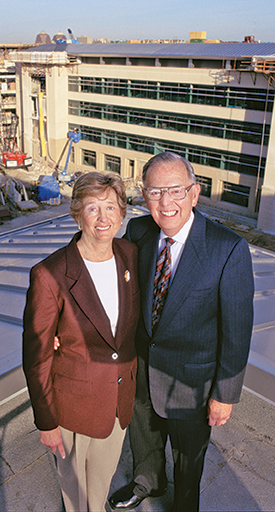
Giving and Receiving
Since the Institute’s establishment, Jim and Virginia Stowers endowed the institution with a total of $2 billion in gifts making it the world’s second largest medical research organization, second only to the Howard Hughes Medical Institute in Chevy Chase, Maryland. Such generosity has established Jim and Virginia Stowers as two of only a handful of philanthropists who have given away almost the entirety of their fortune.
Over his lifetime, Stowers’ contributions to business and his community have garnered him numerous awards. Among them were the 2010 Lifetime Achievement award from the Expect Miracles Foundation, an award subsequently renamed in his honor; the 2005 Entrepreneur of the Year National Award from Ernst & Young; an Honorary Doctorate of Science from Washington University in 2005; an Honorary Doctor of Medicine from the University of Missouri-Kansas City School of Medicine in 2001; the Kansas City-based Midwest Research Institute Trustee Citation in 2002; and the 2003 Greater Kansas City Business Hall of Fame award.
Together with his wife Virginia, Stowers received the 2013 Social Entrepreneurship Award from the University of Missouri-Kansas City Henry W. Bloch School of Management; Research!America’s 2009 Gordon and Llura Gund Leadership Award for their “leadership and commitment to basic biomedical research in founding, building and developing the Stowers Institute into a world-class research institution”; the 2003 Lance C. Wittmeyer Award from the Touched by Cancer Foundation; the Chancellor’s Medal from the University of Missouri-Kansas City; the Kansas Citians of the Year award in 2005 from the Kansas City Chamber of Commerce; and the “Others Award” for community service from the Salvation Army in 1999.
“Before I met Jim, I imagined someone who might be overly aggressive with little concern for people,” recalls developmental biologist Robb Krumlauf, PhD, who left a position as division head at the prestigious National Institute of Medical Research to become the Stowers Institute’s first scientific director. “But Jim was different – he was warm, friendly, intelligent, and driven. Jim’s combination of these characteristics sold me on the idea that this place was going to succeed.”
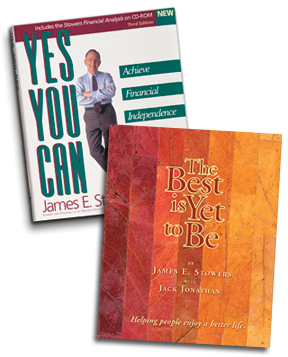
Lessons Learned and Shared
Although known for his nice-guy image and an intense dedication to teamwork, Stowers was also unafraid to stand-up for his beliefs. Stowers’ toughness was especially apparent in 2005. In response to potential legislation aimed at criminalizing research with human embryonic stem cells, he and Virginia co-founded and provided nearly $25 million in funding to an organization advocating for scientists’ right to pursue ethical and federally permitted research. After an intense year-long political battle, Missouri voters narrowly passed an amendment to the state constitution that ensured scientists’ right to perform federally permitted stem cell research without fear of criminal prosecution by the state.
As if building one of the country’s most renowned asset management firms and endowing most of his fortune to cutting-edge research—and fighting the occasional political battle—weren’t enough, Stowers also wrote several books, often in collaboration with his longtime friend Jack Jonathan. Among them were Yes, You Can Achieve Financial Independence, published in 2000, and the autobiographical The Best is Yet to Be, published in 2007.
The Best is Yet to Be reads like a life-long list of successfully accomplished New Years’ resolutions. Anecdotes in the book range from amusing—how he “managed” his high school’s Blind Date Bureau and diligently practiced the saxophone—to making sure he wouldn’t die prematurely by vigorously exercising for half an hour every day. Many chapters conclude with “What I Learned” bullet points—among them, “Take care of my appearance,” “Never ask someone to do something I wouldn’t be willing to do myself” and “Plan ahead before making a decision.”
When Stowers talked about “planning ahead” he meant decades not days. President Emeritus William Neaves, PhD, former dean of the medical school at The University of Texas Southwestern, recalls an extraordinary first-day-of-work exchange with Stowers upon joining the Institute as its chief executive officer in June 2000. “Jim came by my office to welcome me and his next question was, ‘What are we going to do when this place is filled?’ The building wasn’t complete yet. We didn’t have a single scientist in the facility. But Jim was already thinking at least a decade ahead.”
Honoring His Vision
After a long and productive life, Jim Stowers died on March 17. A week later, more than five hundred colleagues, friends, and dignitaries paid their respects to the Stowers family at an open house at the Institute. The March 24 celebration of life offered a short video that included photos of the business and philanthropic leader as a youngster, videos of Jim and Virginia with their children and grandchildren, and their wedding photo. Some of the most poignant photos were from Jim’s ninetieth birthday party only six weeks before—and a closing shot of his favorite jet taking off into the sky.
Attendees also were able to sign guest books and greet Virginia and the family in a receiving line in the Institute’s library. It was fitting that Stowers’ life would be honored at a place that he’d built from the ground up and had held so dear, a place that was the culmination of his dreams, a place where Stowers’ life philosophy was expressed to construction workers on signs during the Institute’s construction: “Do it right the first time; You will be part of the team that made it happen; You will be remembered forever for what you do.”
As indeed, he will be.
News

18 December 2025
Stowers scientist discovers insights into how plants “talk” to bacteria in soil, possibly informing future antimicrobial therapies
Read Article
News
17 December 2025
Explore 15 highlights from 2025 at the Stowers Institute: New scientists, impactful discoveries, and a milestone moment.
Read Article
News
08 December 2025
Craig Venter, Ph.D., founder of the J. Craig Venter Institute, joined Alejandro Sánchez Alvarado, Ph.D., for an evening of reflection and conversation surrounding his scientific journey.
Read Article
